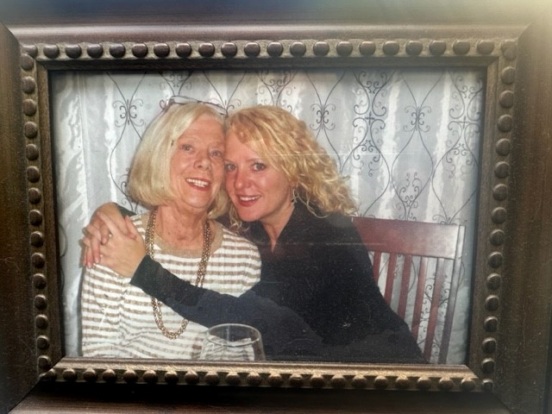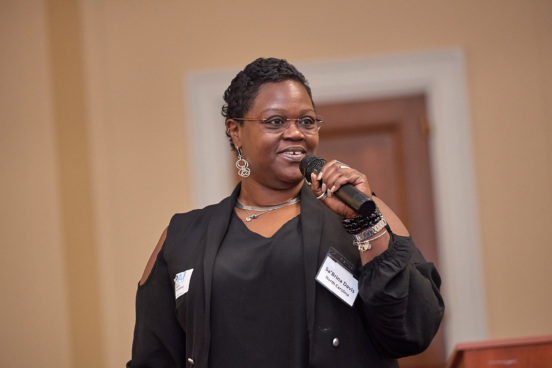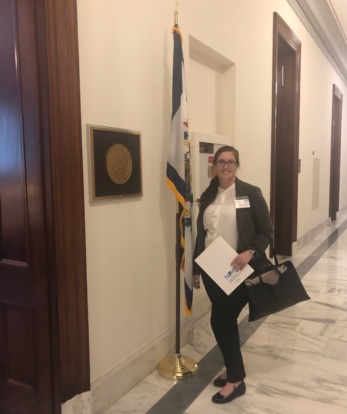Equity, Palliative Care

Melissa Williams shares her perspectives on learning about palliative care and how it could have helped her family.
By Melissa Williams
I did not meet my grandmother until 2004, after my mom petitioned for her to come to the US to stay with my family so my mom could be her primary caregiver. Nanay lived in the Philippines, where she was born and where my mother was raised. At a young age, Nanay suffered from rheumatic fever which left her both deaf and with rheumatic heart disease, a chronic heart condition that caused her mitral valve to not function as it should. Consequently, throughout much of her adult life she was hospitalized for heart failure.
Two years after she moved in with us, my dad – who works for the Department of Defense – accepted a job opportunity that relocated my parents and grandmother to Okinawa, Japan. After they had been there for a little over a year, Nanay was hospitalized for heart failure; this time, however, was different. Doctors insisted that she undergo surgery to have her mitral valve repaired. Unable to perform the surgery in Okinawa, she was transported by medevac to an army medical center in Hawaii where the procedure was done.
Shortly following the surgery, her health began to deteriorate and she suffered from serious complications that required her to have a tracheostomy and regular dialysis. For nine long months, she was confined to the ICU. Because she was deaf and didn’t sign, Nanay and the hospital staff had difficulty understanding one another and it was incredibly challenging for her to communicate how she felt, which often left her frustrated and confused.
The vastness of the Pacific Ocean separated her from my parents. My dad had to take significant time away from work so that he and my mom could go back and forth from Japan to Hawaii to check on Nanay; eight years later, my parents are still dealing with the financial consequences.
A few months ago, I attended the first of a series of public workshops sponsored by the Roundtable on Quality Care for People with Serious Illness at the National Academies of Sciences, Engineering, and Medicine. The day was filled with thoughtful, moving presentations and captivating discussions on the importance of integrating the patient and caregiver voice into serious illness care. The speakers highlighted individual cases and personal accounts that demonstrated the positive outcomes that result from providing palliative care, such as helping patients achieve their life goals, like to go fly fishing on the Snake River in Idaho despite undergoing cancer treatments, or honoring the wishes of parents with infants who only have hours or days to spend with their little ones because of a life-threatening condition. Each case emphasized what was done to improve the quality of life for patients and families.
As I heard case after case about how patients, families, and caregivers were asked about their personal and life goals and how that conversation helped transform the care and treatment they or their loved ones received, I couldn’t help but think of Nanay and how she and my family could have benefitted from that type of person-centered care.
At the age of 72, Nanay passed away from complications from having her mitral valve repaired. She spent her last remaining months in a hospital bed – not able to be around her family, or eat the food that she loves, or do the things that she loved to do. My family never had those conversations about how the surgery would affect my grandmother’s quality of life, or even my parents’ quality of life. If she or my family were asked ‘what matters to her,’ she wouldn’t have spent her last months suffering the way that she did in a place where she had no loved ones nearby.
In the months since the Roundtable, I’ve come across a number of articles that show how providing palliative care is key to improving healthcare delivery and health outcomes – it achieves that Triple Aim by improving the patient experience and the overall health of populations, while also reducing per capita health care costs. While there are certainly a number of positive public health and policy implications to providing palliative care, its provision is – and will be – most felt at the individual level. Increasing awareness of and improving access to palliative care will not only benefit patients, but it’ll benefit families and caregivers alike reducing the burdens that are often associated with serious illness.
If my family had access to palliative care prior to my grandmother’s surgery, I believe the outcome would have been very different. Nanay may not have been able to live as long but, quite possibly, she could have lived longer; either way I do know that her last few months would’ve been spent doing the things she loved to do surrounded by those she loved most. My family likely would have been better prepared for her passing, rather than given the false hope that she could get better. My parents would probably be more financially stable, and my grandmother would have maybe felt more empowered knowing that she was being listened to and had a critical role in her care.
For these reasons, I applaud the efforts in states like Nevada, Tennessee and Minnesota, and national efforts like the Palliative Care Hospice Education and Training Act that all help to raise awareness of and reduce the barriers to palliative care. All patients and their families deserve to be listened to, have a say in their care, and share what matters most to them in the face of serious illness. Fundamentally, palliative care is person-centered care and everyone everywhere should have access to it.
Equity, Palliative Care
Care Planning, Caregiving, COVID, Needs Navigation, Palliative Care
Caregiving, Equity, Health Literacy, Insurance, Palliative Care
Care Planning, Health Literacy, Needs Navigation, Palliative Care


